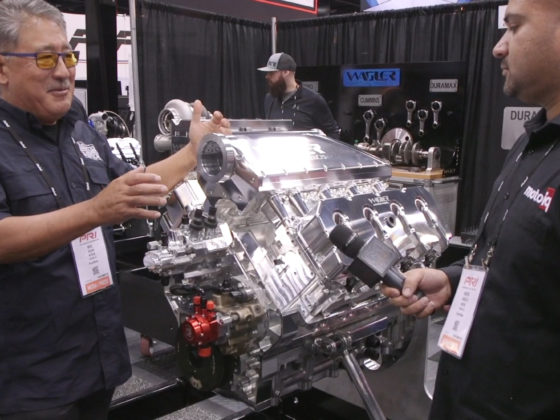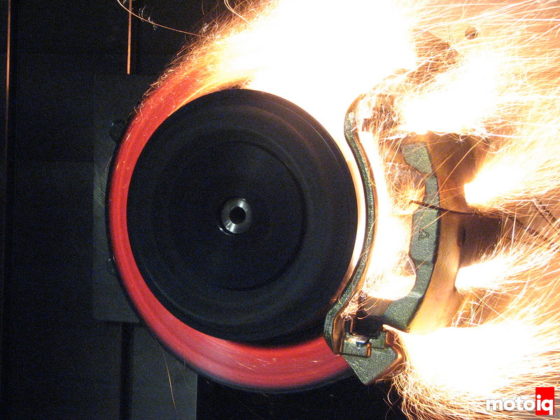
JC Fabworks built a 321 stainless steel twin-scroll turbo manifold with 1 3/4″ primaries and a 2-1 collector. This feeds exhaust gases into a Garrett 3584RS dual-ball bearing turbocharger with a 67mm compressor, .60 cold-side A/R, and a large 1.01 A/R twin-scroll turbine. Dual Turbosmart 40mm CompGates are employed to manage boost in combination with a Turbosmart Raceport blow-off valve for off chance that the throttle gets closed.

With two wastegates and an AWD transaxle it can be hard to find a place for all the plumbing to go. It’s a race car, though, and sometimes the shortest path is the easiest and best one. So JC Fabworks simply popped the wastegate dumps up out of the engine bay through the hood. Problem solved. Heat shielding and reflective foil are put to the task of preventing the heat from the wasted exhaust gases from causing too much trouble.
On the other side of the equation, the exhaust gases that are utilized by the turbine section find their way through a 3″ 304 stainless steel downpipe of JC Fabworks’ design and out through a 3″ titanium exhaust that exits into a blown diffuser.

Engines are noisy, hot, and shaky things. Sensors directly affixed to engines are a bad idea because they tend to fail when they get too hot or vibrate too much. As we did on our own Project SC300, JC Fabworks has remote-mounted various sensors on a trick custom machined and dimpled pedestal.
And what’s keeping tabs on those sensors? That would be a Syvecs S6+ ECU which happens to be driving an entirely stock ignition system.

Recall that a typical car has a wet sump oil system, where the oil pan (sump) contains a large quantity of oil and the pick-up draws oil out of the sump into the oil pump. In the case of a dry sump, there is very little fluid in a shallow pan, and a scavenge pump pulls oil and feeds it to an external reservoir that provides for oil storage, de-aeration and cooling-ish.




3 comments
You did get something wrong, there’s no apostrophe in Pikes Peak, it was universally accepted to remove it decades ago. Just kidding though, no haterade here. Cole builds some seriously badass stuff.
Solid build! It’s obvious a lot of thought went into it. I especially approve of the turbine housing choice.
Dang, it was going so well until the exhaust blown diffuser.
The team need research the Coanda effect. Because they need to install a flat tapered exhaust tip. And it needs to be parallel to match the exact angle of the diffuser. On top of that, they need to reprogram the ECU so that it still has exhaust flow on throttle lift, or you will lose downforce during cornering, which is when you need it most.
Also, the flow straighteners can be curved, so the air flow diffuses laterally, too. This is a very simple modification. Take a look at the F1 blown diffuser undertrays. It wasn’t that long ago that the EBD was state of the art.